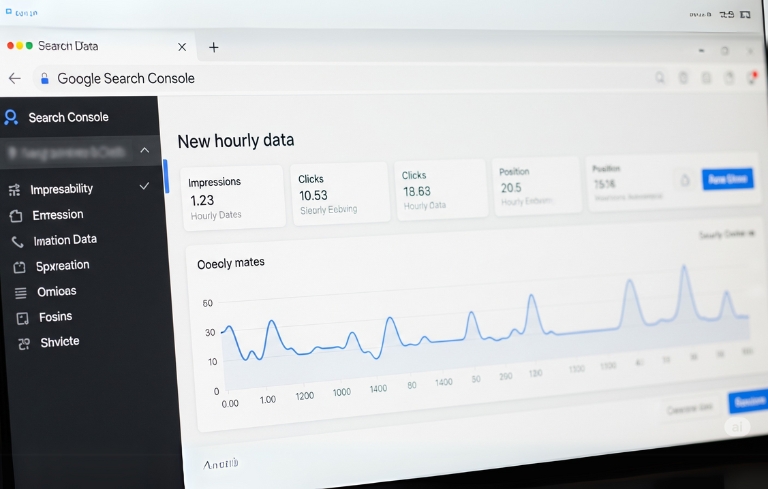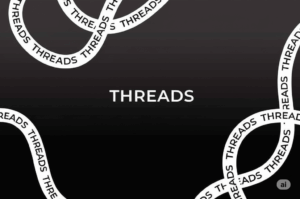Ever felt like you’re flying blind when a sudden surge or dip in your website’s performance hits? You know something’s happening, but getting to the root cause quickly feels like a frantic scavenger hunt. Well, get ready for a game-changer! Google has significantly updated its Search Console API, delivering a level of granularity that data-savvy marketers and SEO professionals have been dreaming of.
Now, you can pull hour-by-hour data for the last 10 days, including crucial metrics like impressions, clicks, CTR (Click-Through Rate), and position. This isn’t just a small enhancement; it’s a monumental leap forward, providing unprecedented precision for analyzing campaign spikes, quickly identifying issues, and fine-tuning time-based strategies.
If you’ve been relying on daily data and wondering how to get ahead in the fast-paced world of digital marketing, this update is your new best friend. It’s time to unlock a deeper understanding of your website performance and make decisions with lightning speed. Ready to get microscopic with your data? Let’s dive in!
Why Hourly Data is the New Gold Standard for SEO
For years, Google Search Console provided daily data, which was great for macro trends. But imagine you launch a major campaign, a news story breaks, or a new product goes live. Daily data could only tell you what happened by the end of the day, not when the impact occurred or for how long. That crucial time lag meant missed opportunities and delayed responses.
The introduction of hourly data changes everything. Here’s why it’s such a big deal:
1. Instant Issue Identification & Troubleshooting:
Before, if your organic traffic dropped mid-day, you might not know about it until the next morning. With hourly data, you can spot a sudden decline in impressions or clicks almost as it happens. This allows for faster troubleshooting of:
- Technical glitches: Was there a server outage, a deployment error, or an indexing problem that coincided with the drop?
- Algorithm shifts: Did a minor Google algorithm update roll out that impacted your rankings, and if so, at what hour did it begin to take effect?
- Competitor activity: Did a major competitor launch a campaign or get a sudden surge in visibility?
This real-time performance monitoring empowers you to diagnose and fix problems with incredible speed, minimizing potential damage.
2. Precision Campaign Analysis & Optimization:
Think about your digital marketing campaigns. Many are time-sensitive:
- News publishers: How quickly does a breaking news story gain visibility and traffic? You can now see the hourly surge and determine peak readership times.
- E-commerce flash sales: How effective was that 2-hour discount code? You can pinpoint the exact hourly performance of your product pages.
- Content launches: Did that new blog post or landing page gain traction immediately after publishing? You can track its impressions and clicks from hour one.
- Social media promotions: If you share content on social media, you can now correlate specific posting times with direct impacts on your organic search performance, helping you fine-tune time-based strategies.
This granular data analysis helps you understand the impact of changes and optimize your content and campaigns for specific times of day, maximizing your ROI.
3. Understanding User Behavior Patterns:
Every audience has unique online habits. With hourly data, you can discover:
- When your target audience is most active on Google Search.
- Peak hours for mobile search versus desktop.
- Whether certain queries perform better at specific times of day (e.g., “breakfast ideas” in the morning, “dinner recipes” in the evening).
This deeper insight into user behavior allows for more informed content scheduling, keyword targeting, and overall SEO strategy refinement.
4. Enhanced A/B Testing & SEO Experimentation:
For SEO professionals running experiments (e.g., tweaking meta titles and descriptions, implementing new structured data, adjusting internal linking), hourly data provides almost immediate feedback. You can quickly see the hourly effect of your changes on CTR and position, allowing for faster iteration and more effective experimentation. This is a huge win for data-driven decision-making.
Accessing Your New Superpower: The Search Console API
It’s important to note that while the Google Search Console web interface already offers a “24-hour view” for recent data, this expanded hourly data for up to 10 days is primarily accessible through the Search Console API.
For those unfamiliar, an API (Application Programming Interface) allows different software applications to communicate with each other. In this case,1 it means you or your developers can programmatically pull this granular data directly into:
- Custom dashboards: Build bespoke performance reports in tools like Google Looker Studio (formerly Data Studio), Power BI, or Tableau.
- Automated reporting systems: Set up scripts to automatically fetch and analyze data, triggering alerts for significant changes.
- Internal SEO tools: Integrate this data into your own proprietary systems for more comprehensive analysis.
- Third-party SEO tools: Expect many popular SEO platforms to quickly integrate this new hourly data into their offerings, providing easy-to-use interfaces for marketers.
To leverage this, you’ll typically need to enable the Search Console API in your Google Cloud Console and set up authentication credentials. Developers will then use specific API dimensions (like HOUR) and data states (HOURLY_ALL) in their requests to retrieve the desired hourly breakdown of impressions, clicks, CTR, and average position.
Best Practices for Harnessing Hourly Data
While the possibilities are exciting, a few best practices will help you get the most out of this new functionality:
- Define Your Alerts: Set up automated alerts for unusual spikes or drops in your key metrics. Knowing when a change occurs is the first step to understanding why.
- Correlate with Events: Always cross-reference hourly data with any significant events: content publication, campaign launches, technical changes, or even major news events that might impact search behavior.
- Compare Apples to Apples: Utilize the ability to compare the current hour’s performance with the same hour on a previous day or week to identify consistent patterns or anomalies. This helps filter out daily noise.
- Integrate with Other Data Sources: Combine this hourly Search Console data with your Google Analytics (especially GA4 for user behavior insights), CRM data, and paid media campaign data for a truly holistic view of your digital performance.
- Focus on Actionable Insights: Don’t just collect data for data’s sake. Use these granular insights to make immediate, informed decisions that optimize your content, improve user experience, and ultimately drive better organic search results.
The Future of Data-Driven SEO is Here
Google Search Console’s new hourly data is more than just a technical update; it’s a strategic enhancement for anyone serious about SEO and digital marketing. It signifies Google’s commitment to providing marketers with the tools they need to navigate an increasingly complex and real-time search landscape.
This unprecedented precision allows you to move beyond reactive adjustments to proactive, data-driven optimization. You can identify trends faster, respond to issues quicker, and understand your audience’s behavior with a level of detail previously unavailable.
So, if you haven’t already, connect with your development team or explore third-party SEO tools that integrate this new hourly data. Embracing this granular data isn’t just about keeping up; it’s about leading the pack and truly fine-tuning your search strategies with a mastery that was once out of reach. The power is now in your hands – use it wisely!







